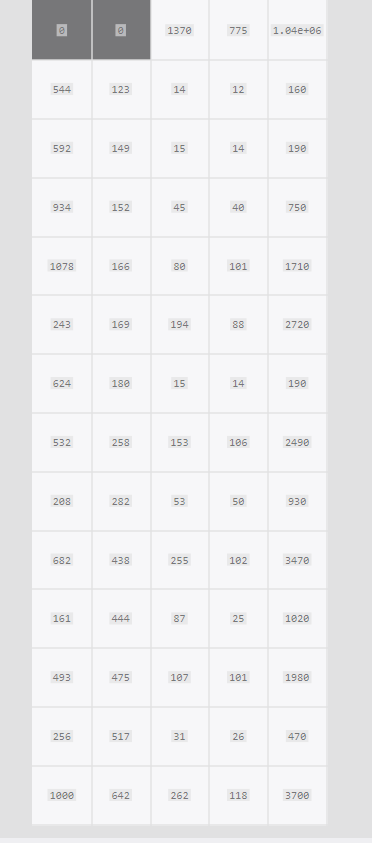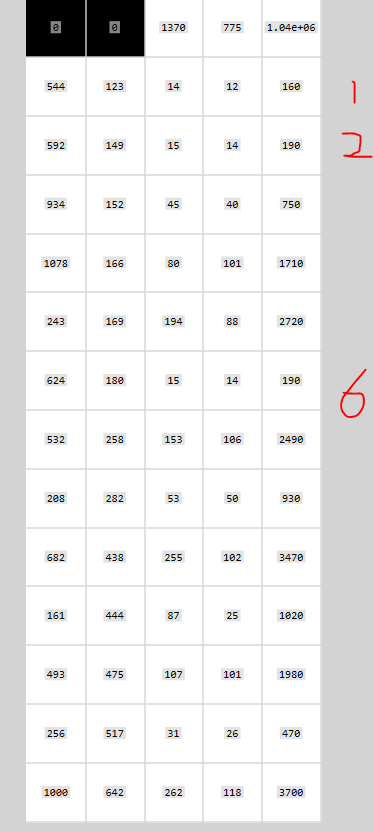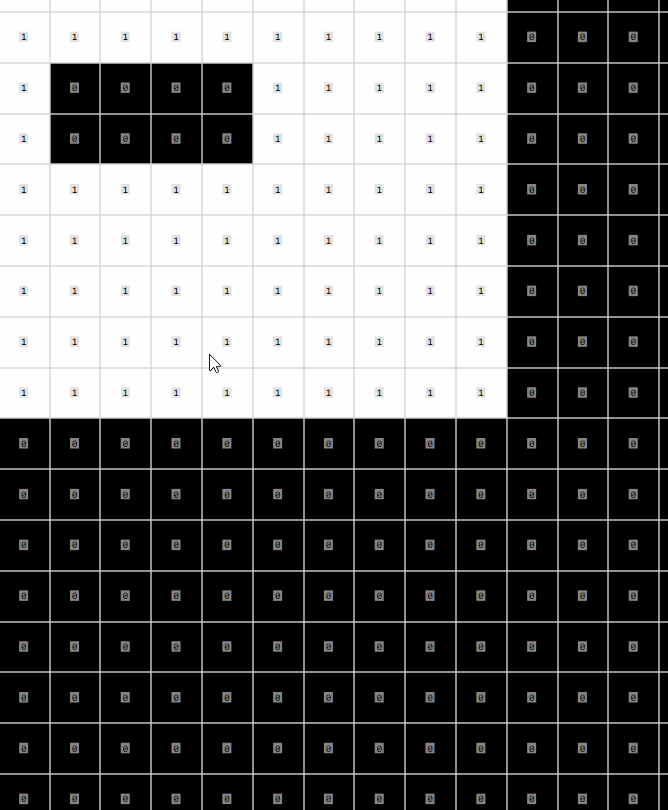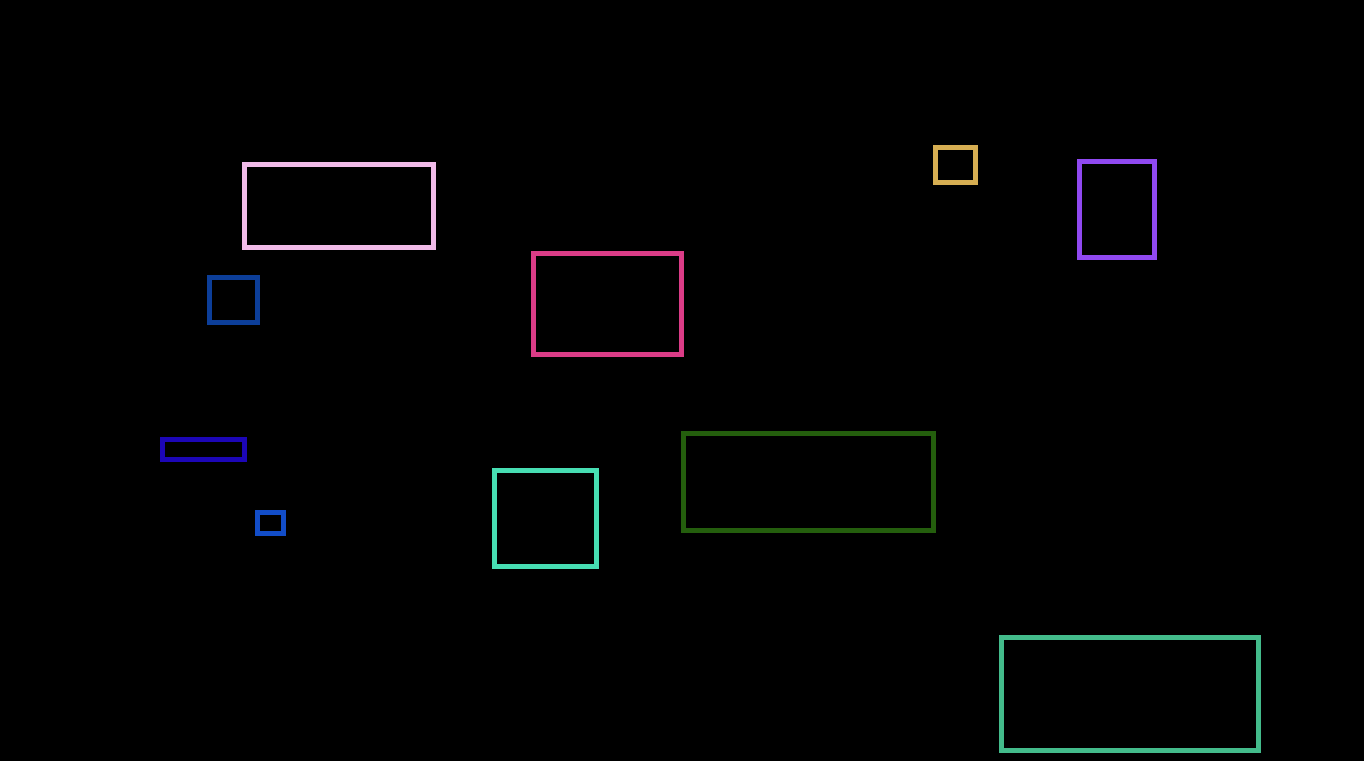OpenCV中的新函數connectedComponentsWithStats使用
阿新 • • 發佈:2017-08-27
main cnblogs 排序 其中 col rec 對比 point pro 主要內容:對比新舊函數,用於過濾原始圖像中輪廓分析後較小的區域,留下較大區域。關鍵字 :connectedComponentsWithStats
在以前,常用的方法是”是先調用 cv::findContours() 函數(傳入cv::RETR_CCOMP 標誌),隨後在得到的連通區域上循環調用 cv::drawContours() “比如,我在GOCVHelper中這樣進行了實現//尋找最大的輪廓 VP FindBigestContour(Mat src){ int imax = 0; //代表最大輪廓的序號 int imaxcontour = -1; //代表最大輪廓的大小  分別對應各個輪廓的x,y,width,height和面積。註意0的區域標識的是background而centroids則對應的是中心點而label則對應於表示是當前像素是第幾個輪廓例子:對於圖像
分別對應各個輪廓的x,y,width,height和面積。註意0的區域標識的是background而centroids則對應的是中心點而label則對應於表示是當前像素是第幾個輪廓例子:對於圖像 Mat img = cv::imread( "e:/sandbox/rect.png",0); cv::Mat img_edge, labels, img_color, stats,centroids; cv::threshold(img, img_edge, 128, 255, cv::THRESH_BINARY); bitwise_not(img_edge,img_edge); cv::imshow("Image after threshold", img_edge); int i, nccomps = cv::connectedComponentsWithStats ( img_edge, labels, stats, centroids ); cout << "Total Connected Components Detected: " << nccomps << endl; vector<cv::Vec3b> colors(nccomps+1); colors[0] = Vec3b(0,0,0); // background pixels remain black. for( i = 1; i < nccomps; i++ ) { colors[i] = Vec3b(rand()%256, rand()%256, rand()%256); if( stats.at<int>(i, cv::CC_STAT_AREA) < 200 ) colors[i] = Vec3b(0,0,0); // small regions are painted with black too. } img_color = Mat::zeros(img.size(), CV_8UC3); for( int y = 0; y < img_color.rows; y++ ) for( int x = 0; x < img_color.cols; x++ ) { int label = labels.at<int>(y, x); CV_Assert(0 <= label && label <= nccomps); img_color.at<cv::Vec3b>(y, x) = colors[label]; } cv::imshow("Labeled map", img_color); cv::waitKey();註意:1、對於OpenCV來說,白色代表有數據,黑色代表沒有數據,所以圖像輸入之前要轉換成”黑底白圖“2、看labels 和 stats,其中第1 2 6 個的面積小於200
Mat img = cv::imread( "e:/sandbox/rect.png",0); cv::Mat img_edge, labels, img_color, stats,centroids; cv::threshold(img, img_edge, 128, 255, cv::THRESH_BINARY); bitwise_not(img_edge,img_edge); cv::imshow("Image after threshold", img_edge); int i, nccomps = cv::connectedComponentsWithStats ( img_edge, labels, stats, centroids ); cout << "Total Connected Components Detected: " << nccomps << endl; vector<cv::Vec3b> colors(nccomps+1); colors[0] = Vec3b(0,0,0); // background pixels remain black. for( i = 1; i < nccomps; i++ ) { colors[i] = Vec3b(rand()%256, rand()%256, rand()%256); if( stats.at<int>(i, cv::CC_STAT_AREA) < 200 ) colors[i] = Vec3b(0,0,0); // small regions are painted with black too. } img_color = Mat::zeros(img.size(), CV_8UC3); for( int y = 0; y < img_color.rows; y++ ) for( int x = 0; x < img_color.cols; x++ ) { int label = labels.at<int>(y, x); CV_Assert(0 <= label && label <= nccomps); img_color.at<cv::Vec3b>(y, x) = colors[label]; } cv::imshow("Labeled map", img_color); cv::waitKey();註意:1、對於OpenCV來說,白色代表有數據,黑色代表沒有數據,所以圖像輸入之前要轉換成”黑底白圖“2、看labels 和 stats,其中第1 2 6 個的面積小於200 而labels中
而labels中 完全對的上號,結果為
完全對的上號,結果為
來自為知筆記(Wiz)
在以前,常用的方法是”是先調用 cv::findContours() 函數(傳入cv::RETR_CCOMP 標誌),隨後在得到的連通區域上循環調用 cv::drawContours() “比如,我在GOCVHelper中這樣進行了實現//尋找最大的輪廓 VP FindBigestContour(Mat src){ int imax = 0; //代表最大輪廓的序號 int imaxcontour = -1; //代表最大輪廓的大小
 分別對應各個輪廓的x,y,width,height和面積。註意0的區域標識的是background而centroids則對應的是中心點而label則對應於表示是當前像素是第幾個輪廓例子:對於圖像
分別對應各個輪廓的x,y,width,height和面積。註意0的區域標識的是background而centroids則對應的是中心點而label則對應於表示是當前像素是第幾個輪廓例子:對於圖像 Mat img = cv::imread( "e:/sandbox/rect.png",0); cv::Mat img_edge, labels, img_color, stats,centroids; cv::threshold(img, img_edge, 128, 255, cv::THRESH_BINARY); bitwise_not(img_edge,img_edge); cv::imshow("Image after threshold", img_edge); int i, nccomps = cv::connectedComponentsWithStats ( img_edge, labels, stats, centroids ); cout << "Total Connected Components Detected: " << nccomps << endl; vector<cv::Vec3b> colors(nccomps+1); colors[0] = Vec3b(0,0,0); // background pixels remain black. for( i = 1; i < nccomps; i++ ) { colors[i] = Vec3b(rand()%256, rand()%256, rand()%256); if( stats.at<int>(i, cv::CC_STAT_AREA) < 200 ) colors[i] = Vec3b(0,0,0); // small regions are painted with black too. } img_color = Mat::zeros(img.size(), CV_8UC3); for( int y = 0; y < img_color.rows; y++ ) for( int x = 0; x < img_color.cols; x++ ) { int label = labels.at<int>(y, x); CV_Assert(0 <= label && label <= nccomps); img_color.at<cv::Vec3b>(y, x) = colors[label]; } cv::imshow("Labeled map", img_color); cv::waitKey();註意:1、對於OpenCV來說,白色代表有數據,黑色代表沒有數據,所以圖像輸入之前要轉換成”黑底白圖“2、看labels 和 stats,其中第1 2 6 個的面積小於200
Mat img = cv::imread( "e:/sandbox/rect.png",0); cv::Mat img_edge, labels, img_color, stats,centroids; cv::threshold(img, img_edge, 128, 255, cv::THRESH_BINARY); bitwise_not(img_edge,img_edge); cv::imshow("Image after threshold", img_edge); int i, nccomps = cv::connectedComponentsWithStats ( img_edge, labels, stats, centroids ); cout << "Total Connected Components Detected: " << nccomps << endl; vector<cv::Vec3b> colors(nccomps+1); colors[0] = Vec3b(0,0,0); // background pixels remain black. for( i = 1; i < nccomps; i++ ) { colors[i] = Vec3b(rand()%256, rand()%256, rand()%256); if( stats.at<int>(i, cv::CC_STAT_AREA) < 200 ) colors[i] = Vec3b(0,0,0); // small regions are painted with black too. } img_color = Mat::zeros(img.size(), CV_8UC3); for( int y = 0; y < img_color.rows; y++ ) for( int x = 0; x < img_color.cols; x++ ) { int label = labels.at<int>(y, x); CV_Assert(0 <= label && label <= nccomps); img_color.at<cv::Vec3b>(y, x) = colors[label]; } cv::imshow("Labeled map", img_color); cv::waitKey();註意:1、對於OpenCV來說,白色代表有數據,黑色代表沒有數據,所以圖像輸入之前要轉換成”黑底白圖“2、看labels 和 stats,其中第1 2 6 個的面積小於200 而labels中
而labels中 完全對的上號,結果為
完全對的上號,結果為
來自為知筆記(Wiz)
OpenCV中的新函數connectedComponentsWithStats使用
